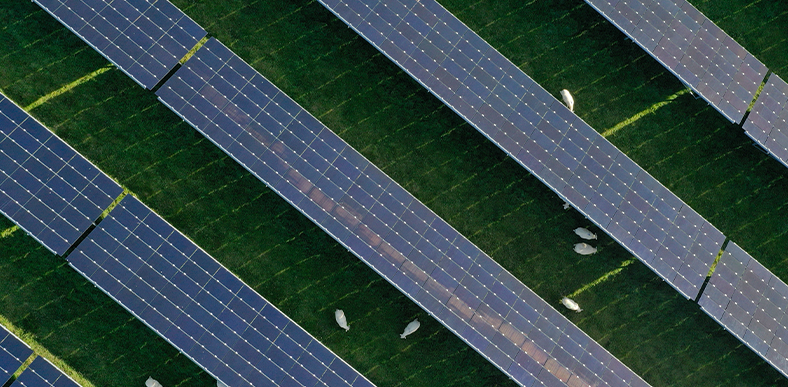Agrivoltaics: what impact on livestock farming and fodder quality?

How do livestock react in the presence of installations? What impact does it have on forage quality? What risks are there for animal welfare? These are questions that Photosol has been answering since 2008, with a recognized expertise in the regions and scientific studies to ensure benefits for agricultural activities.
A Study of More Than 2 Years Conducted by INRAE
Since 2020, INRAE has been precisely analyzing the impacts of photovoltaic panels in agrivoltaic ground-based plants on grass growth. Two sites were made available to scientists to rigorously study the influence of solar panels on the pasture. The chosen sites have different climatic conditions, allowing for representative results from various environments.
A quantitative and qualitative analysis protocol for grass growth was implemented by INRAE. The analyses are conducted under the panels, in the alleys, and in control areas, outside the influence of the solar panels. The researchers analyze soil moisture, grass height, and forage quality.
Grass Growth Maintained Year-round
From the first year of the study, INRAE observed on both sites a maintained cumulative biomass production over the year, with a spread of the forage resource across different seasons. In particular, the presence of panels allows for better productivity during dry periods. As climate change modifies forage calendars, this increased summer productivity is a significant advantage for farmers.
“Every year, we received many positive feedbacks from farmers working on over 260 hectares of our parks, using a sheep farming system. The INRAE study on one of our plants, still ongoing in 2022, confirmed during the first year of measurements that the presence of solar panels leads to a better grass growth dynamic, which is maintained in the summer thanks to the shade from the panels.”
Gabriel Brézet, Co-Director of Business Development
